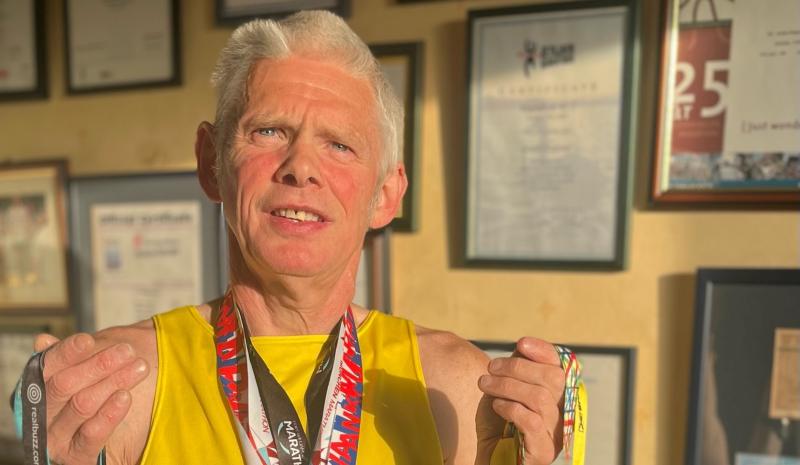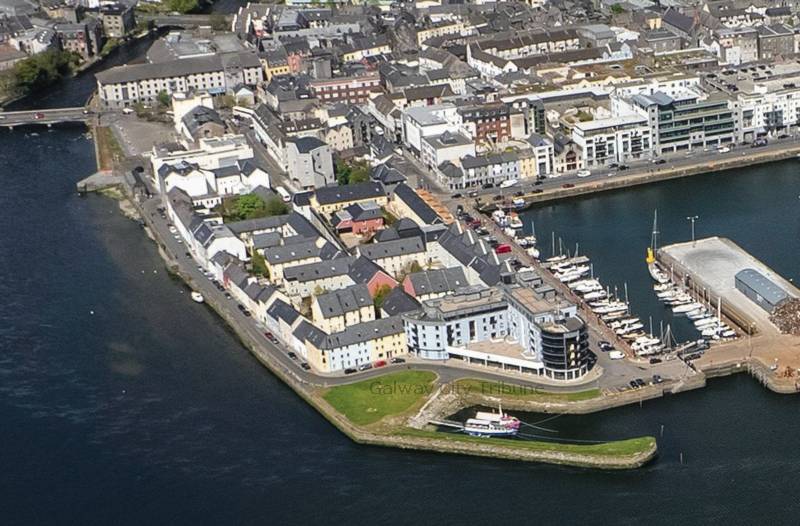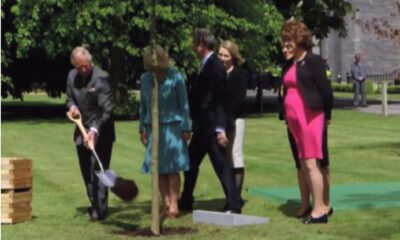News
Pensioner died following teeth extractions

A 71 years old man died after suffering a fatal reaction to the generic form of an antibiotic, which had been prescribed following the extraction of teeth in UHG last summer, an Inquest into his death heard.
Coroner for West Galway, Dr Ciaran MacLoughlin, explained to the man’s family that owing to his previous history of taking a similar drug, it could not have been predicted that death would result – none of the medical witnesses had ever experienced such an outcome when treating anaphylactic shock.
Patrick Naughton of 155 Corrib Park, Newcastle, walked to nearby University Hospital Galway on the morning of his death, May 23 last. He had an appointment for extractions at 8am, and was picked up by his daughter, Louise King, at 1.05pm.
She said he was in perfect health, and had no complaints apart from a tingling sensation in his tongue, as the local anaesthetic wore off.
They went shopping and picked up his prescription for an antibiotic, ‘Co-amoxiclav’ – a penicillin-based drug, which is better known by its trademark/proprietary name, ‘Augmentin’.
Being on a medical card, Mr Naughton was sold a generic form of Augmentin – of which there are many, the Inquest heard.
After his dinner, he took the antibiotic, lay down for a short time, and then came downstairs clutching his chest.
“His speech was impaired, and his tongue was severely swelled,” Mrs King recalled.
He was driven to A&E immediately, but died later that night.
Oral surgeon, Patrick McCann, told the inquiry that Mr Naughton’s existing medications – which had previously included Augmentin – were noted on his chart before the procedure, so it was well-documented that he had had no known allergy to penicillin.
“The allergic reaction was not predicted,” he said.
He added that the anaphylactic shock that ultimately caused the death was not a delayed reaction to the local anaesthetic and sedative given to Mr Naughton prior to the dental procedure.
The Inquest heard that when Mr Naughton presented to A&E his GCS – which measures brain function – was 15 out of a possible 15. He was given the standard treatment for anaphylactic shock, which included oxygen, antihistamines, steroids and adrenaline, but his condition deteriorated.
Despite his swollen tongue, Mr Naughton initially had 95% oxygen saturation, but this gradually decreased, and the last resort was to perform a tracheotomy – a difficult, but necessary, procedure to install a definitive airway.
However, the consultant anaesthetist on call, Dr Leo Kevin, said that owing to Mr Naughton’s already large – and now swollen – neck, it was impossible for emergency medical staff to identify the usual ‘landmarks’ such as the Adam’s Apple, so they could not perform the procedure there and then.
“The only safe way to do a tracheotomy in this situation is a slow dissection by an ENT surgeon in the operating room,” he explained.
However, within seconds of arriving, Mr Naughton had no pulse, and chest compressions were commenced. After one hour of CPR, resuscitation ceased, and he was pronounced dead at 10.30pm.
He said that Mr Naughton’s pre-existing medical problems had shortened the odds of survival.
“A young person with anaphylactic shock is more likely to be retrievable,” he said.
Mr Kevin told the Inquest that he suspected Mr Naughton had suffered a cardiac arrest on the operating table. He agreed with the Coroner, that the stress of the allergic reaction had likely caused him to go into heart failure.
However, consultant pathologist, Dr Michael Tan, said that he could find no convincing evidence, when examining the heart muscle under the microscope, to say that a heart attack was the cause of death.
He concluded that the anaphylactic shock was “most consistent” with a severe reaction to an antibiotic.
Dr MacLoughlin returned a verdict in accordance with the medical evidence, that death was caused by asphyxia, due to anaphylactic shock, due to a severe allergic reaction to Co-omoxyclav.
“You hear occasionally of people dying from a severe reaction to peanuts or wasp stings, this was the same kind of thing – normally, it is quite successfully treated,” the Coroner said.
“Because of his previous history of being given this chemical, doctors felt he had no known allergy, and couldn’t have expected this to happen.”
He offered his sincere sympathies to Mr Naughton’s children, in-laws, and other family members who attended the Inquest, on the tragic and unexpected circumstances of his death.
Connacht Tribune
West has lower cancer survival rates than rest

Significant state investment is required to address ‘shocking’ inequalities that leave cancer patients in the West at greater risk of succumbing to the disease.
A meeting of Regional Health Forum West heard that survival rates for breast, lung and colorectal cancers than the national average, and with the most deprived quintile of the population, the West’s residents faced poorer outcomes from a cancer diagnosis.
For breast cancer patients, the five-year survival rate was 80% in the West versus 85% nationally; for lung cancer patients it was 16.7% in the west against a 19.5% national survival rate; and in the West’s colorectal cancer patients, there was a 62.6% survival rate where the national average was 63.1%.
These startling statistics were provided in answer to a question from Ballinasloe-based Cllr Evelyn Parsons (Ind) who said it was yet another reminder that cancer treatment infrastructure in the West was in dire need of improvement.
“The situation is pretty stark. In the Western Regional Health Forum area, we have the highest incidence of deprivation and the highest health inequalities because of that – we have the highest incidences of cancer nationally because of that,” said Cllr Parsons, who is also a general practitioner.
In details provided by CEO of Saolta Health Care Group, which operates Galway’s hospitals, it was stated that a number of factors were impacting on patient outcomes.
Get the full story in this week’s Connacht Tribune, on sale in shops now, or you can download the digital edition from www.connachttribune.ie. You can also download our Connacht Tribune App from Apple’s App Store or get the Android Version from Google Play.
Connacht Tribune
Marathon Man plans to call a halt – but not before he hits 160 races

On the eve of completing his 150th marathon, an odyssey that has taken him across 53 countries, Loughrea’s Marathon Man has announced that he is planning to hang up his running shoes.
But not before Jarlath Fitzgerald completes another ten races, making it 160 marathons on the occasion of his 60th birthday.
“I want to draw the line in 2026. I turn 57 in October and when I reach 60 it’s the finishing line. The longer races are taking it out of me. I did 20 miles there two weeks ago and didn’t feel good. It’s getting harder,” he reveals.
“I’ve arthritis in both hips and there’s wear and tear in the knees.”
We speak as he is about to head out for a run before his shift in Supervalu Loughrea. Despite his physical complaints, he still clocks up 30 miles every second week and generally runs four days a week.
Jarlath receives injections to his left hip to keep the pain at bay while running on the road.
To give his joints a break, during the winter he runs cross country and often does a five-mile trek around Kylebrack Wood.
He is planning on running his 150th marathon in Cork on June 4, where a group of 20 made up of work colleagues, friends and running mates from Loughrea Athletics Club will join him.
Some are doing the 10k, others are doing the half marathon, but all will be there on the finishing line to cheer him on in the phenomenal achievement.
Get the full story in this week’s Connacht Tribune, on sale in shops now, or you can download the digital edition from www.connachttribune.ie. You can also download our Connacht Tribune App from Apple’s App Store or get the Android Version from Google Play.
CITY TRIBUNE
Galway ‘masterplan’ needed to tackle housing and transport crises

From the Galway City Tribune – An impassioned plea for a ‘masterplan’ that would guide Galway City into the future has been made in the Dáil. Galway West TD Catherine Connolly stated this week that there needed to be an all-inclusive approach with “vision and leadership” in order to build a sustainable city.
Deputy Connolly spoke at length at the crisis surrounding traffic and housing in Galway city and said that not all of the blame could be laid at the door of the local authority.
She said that her preference would be the provision of light rail as the main form of public transport, but that this would have to be driven by the government.
“I sat on the local council for 17 years and despaired at all of the solutions going down one road, metaphorically and literally. In 2005 we put Park & Ride into the development plan, but that has not been rolled out. A 2016 transport strategy was outdated at the time and still has not been updated.
“Due to the housing crisis in the city, a task force was set up in 2019. Not a single report or analysis has been published on the cause of the crisis,” added Deputy Connolly.
She then referred to a report from the Land Development Agency (LDA) that identified lands suitable for the provision of housing. But she said that two-thirds of these had significant problems and a large portion was in Merlin Park University Hospital which, she said, would never have housing built on it.
In response, Minister Simon Harris spoke of the continuing job investment in the city and also in higher education, which is his portfolio.
But turning his attention to traffic congestion, he accepted that there were “real issues” when it came to transport, mobility and accessibility around Galway.
“We share the view that we need a Park & Ride facility and I understand there are also Bus Connects plans.
“I also suggest that the City Council reflect on her comments. I am proud to be in a Government that is providing unparalleled levels of investment to local authorities and unparalleled opportunities for local authorities to draw down,” he said.
Then Minister Harris referred to the controversial Galway City Outer Ring Road which he said was “struck down by An Bord Pleanála”, despite a lot of energy having been put into that project.
However, Deputy Connolly picked up on this and pointed out that An Bord Pleanála did not say ‘No’ to the ring road.
“The High Court said ‘No’ to the ring road because An Bord Pleanála acknowledged it failed utterly to consider climate change and our climate change obligations.
“That tells us something about An Bord Pleanála and the management that submitted such a plan.”
In the end, Minister Harris agreed that there needed to be a masterplan for Galway City.
“I suggest it is for the local authority to come up with a vision and then work with the Government to try to fund and implement that.”















